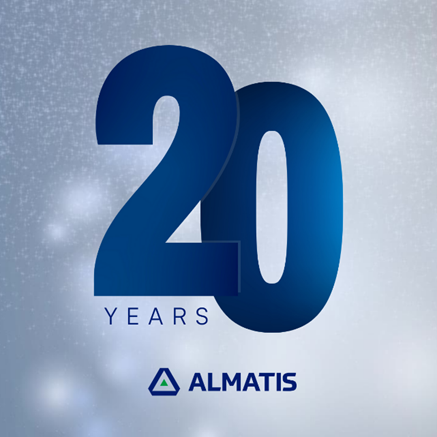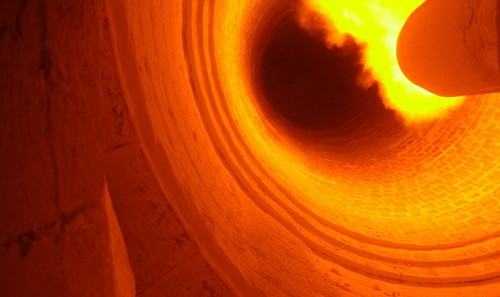"We target to be the leader in alumina supply in India, and our commitment is shown through our new tabular plant", Barbara Steuler stated in an Interview with ISR.
We would like to have some details of the global business of Almatis. How did the company fare in the previous fiscal?
Almatis is the market leader in specialty alumina products and solutions for the high-performance refractory and ceramics markets. At our core, we focus on customer centricity, innovative & sustainable products, operational efficiency, quality in everything we do, and the health & safety of our employees.
Our 1,000 employees operate nine industrial sites and six application and development centres across all major regions of the world. Each major region has dedicated manufacturing facilities to meet market demand. Specific global products are produced in every region to secure quality and ensure supply to global customers. This allows our customers to source the same product and product quality in each region of the world.
The global business in 2021 was very strong, as market demand returned even earlier than market predictions and our own expectations. Demand started an upward curve already in September 2020, and throughout 2021, we produced at prepandemic levels. Throughout 2021, we encountered many logistic and supply chain challenges, which unfortunately have not subsided in 2022. Global logistics issues will continue to push the macro-trend towards regional sourcing and supply chains. All regions and markets recovered and even exceeded 2019 business levels, and we adjusted our strategy to focus on speed and organisational efficiency to serve our customers’ needs. We executed this strategy throughout 2021 and, despite all the supplyrelated challenges, were able to realise many improvements in our performance. Almatis is well-positioned to manage this trend as we already have the largest regionally-based operational footprint in the industry, which has been further strengthened in the past year by the commencement of our new tabular plant in India and the launch of our additional distribution centre in Singapore for the South East Asian region. We continue to evaluate ways we can further improve our sourcing position and maintain reliable supplies to our customers in all regions.
How is the global market for alumina at the moment? Which industry is projected to become the biggest end-user for aluminas in the future? Do you foresee any new end-user for aluminas?
The refractory market will continue to grow the strongest, driven by the development of key infrastructure projects requiring steel, and the Asian region will lead this growth. While China has historically been the growth driver in that region, India is poised to take over the role and will demand significantly more refractory raw materials than in past years. We target to be the leader in alumina supply to the refractory industry in India, and our commitment is shown through our new fully integrated tabular plant. Shifts in regulations (e.g. green energy, climate change), global logistics challenges and digitalisation are also creating many opportunities all around the world. Those new trends will generate additional growth in the developed regions like Europe, North America and Japan, where the legacy growth drivers of steel and GDP contribute less in the long term.
The development trends for refractory raw materials will focus on the need for reduced heat losses and improved operational efficiency. Alumina-spinel refractories for steel ladle lining can reduce the heat losses by 10-20 Kelvin when compared to graphite-containing carbon bonded basic bricks, which saves energy and money and reduces CO2 emissions and complements ‘clean’ steelmaking. Sustainable initiatives for steel production will be the main driver for the refractory market around the world. One example is the trend from traditional steel production via blast furnace to EAF technology so that scrap can be used as direct feedstock. In the coming years and decades, direct reduction processes, including hydrogen, will eventually replace carbonbased reduction in blast furnaces.
Specifically for the Indian market, the technological aspects in refractory engineering are changing rapidly in both product design and ease of installation, thereby driving the usage of higherperforming tabular and synthetic aluminas across the value chain.
While many of the refractory solutions required to facilitate this trend are already available, Almatis is currently in partnership with many customers to develop additional products to help their products withstand even more stringent and corrosive working environments. As the technological, we strongly believe that synthetic alumina-based raw materials will play an even more vital role to cope with the new process challenges, and are innovating around the concepts of improved performance and lining life, reduced CO2 footprint and sustainable solutions.
You are setting up a new plant in India that would manufacture specialty alumina. Please give us some details on the facility.
Our new tabular plant in India is a state-of-the-art Tabular manufacturing facility that was successfully commissioned at the end of 2021. The plant is ramping up operations towards full capacity this year, and in January 2022, we started supplying the Indian market with locally-made global quality tabular alumina products. The drivers for establishing this integrated tabular making facility at Falta, West Bengal, were our strong footprint in the region for over 2 decades as well as long term association and trust from the customers. With Indian steel demand and production, together with non-ferrous and allied industries, projected to continuously rise, leveraging on the infrastructural and urban developmental plans, it was imminent that a local facility would secure the growing tabular alumina demand envisaged for the coming years.
Are the products manufactured in the new plant going to cater to the Indian market?
The products manufactured at our new plant are focused on supplies to the domestic Indian market, but being a global product, the plant can be a source for the nearby South Asian region as well. We predict that the Indian iron and steel market will continue to grow strong – driving the high performing special refractory requirements, and the advanced steelmaking technologies will demand the usage of tabular alumina aggregates in various applications. Further, the congregation of global refractory players in India makes the region a long-term growth centre, and we are excited to offer locally produced tabular alumina products to cater to this progress.
How much imports will be substituted by the products manufactured from the Falta plant?
Almatis has historically supplied much of the Indian market from our European operations. Initially, a supply chain of European tabular alumina will remain available while the plant ramps up to full capacity. Our final goal, however, is to have an independent operation in India that is able to supply the market demand and does not require supplemental tabular from other regions. With more than 500 different products in more than 50 end-use markets, we have by far the broadest product portfolio in the specialty alumina industry globally. We will continue to import calcined and reactive aluminas, calcium aluminate cements, magnesium aluminate spinels and dispersing agents to complement our domestically produced tabular and continue to offer our customers a full portfolio of high-performance products. The local base for tabular alumina will be a big boost for the market in terms of reliability of supplies, management of logistic uncertainties and most importantly, instill the confidence in the market that a global product is now available next door.
With the new plant, what will be Almatis’ contribution towards ‘Make in India’?
Our new plant in India makes a strong statement towards the “Make in India” movement. We are eager to continue this trend and bring domestic manufacturing to the tabular raw material market. The plant will not only be a flagship operation for our company, but also be a platform for additional products and innovations in the future. This new facility supports our existing operational strategy to be closer to our customers, and further is strengthened by the global trend towards regional & local manufacturing, with a focus on local supply chains.






















